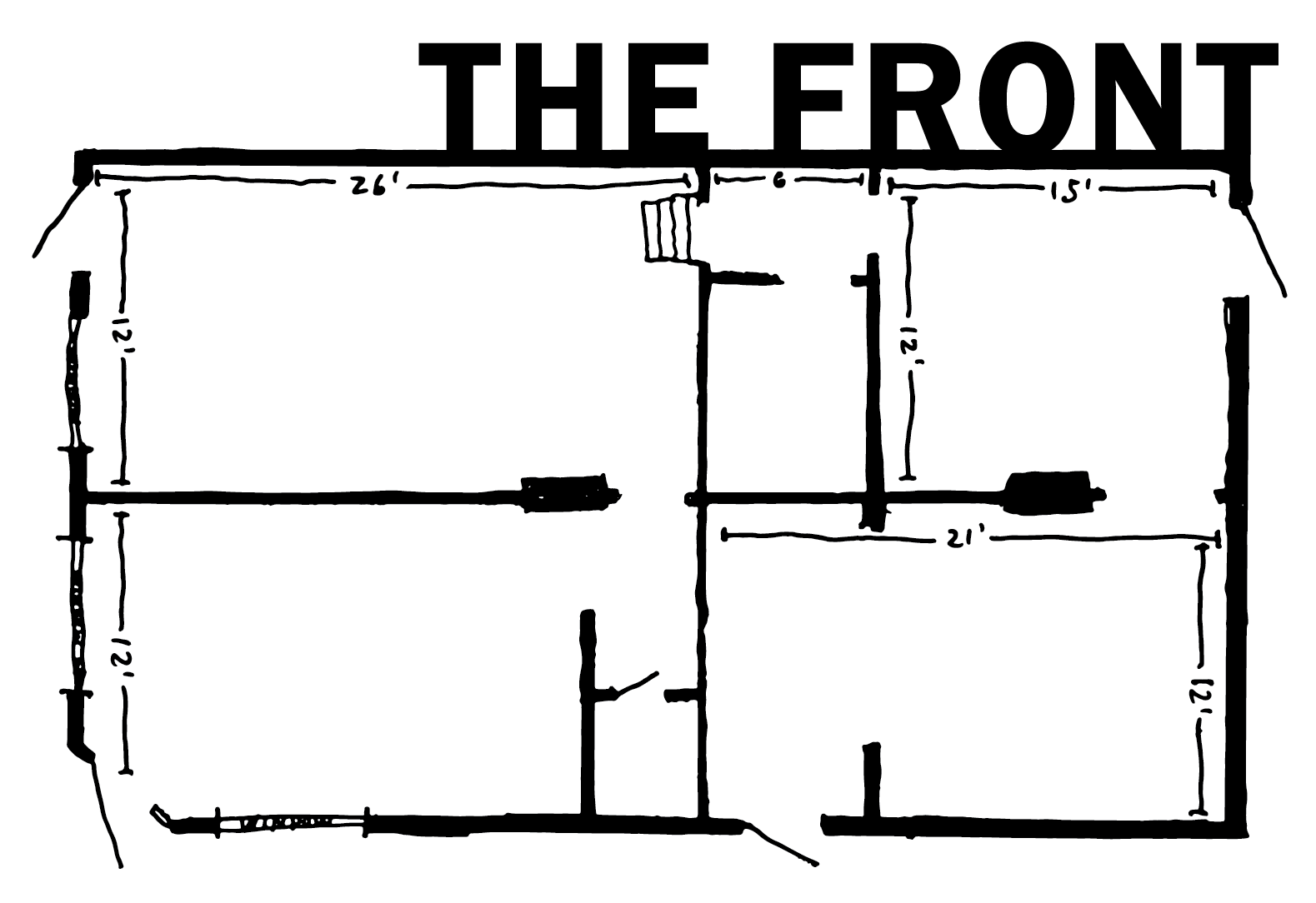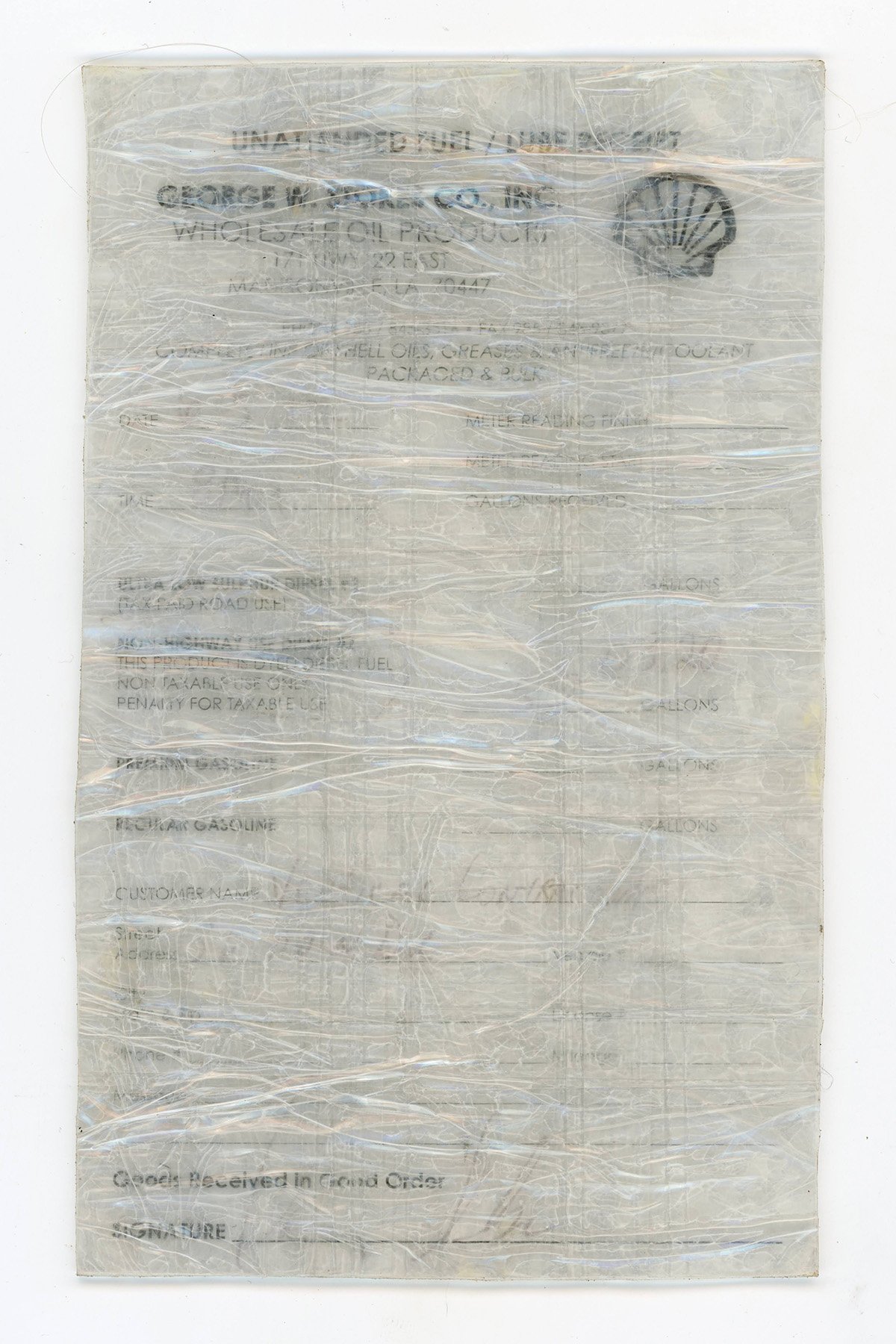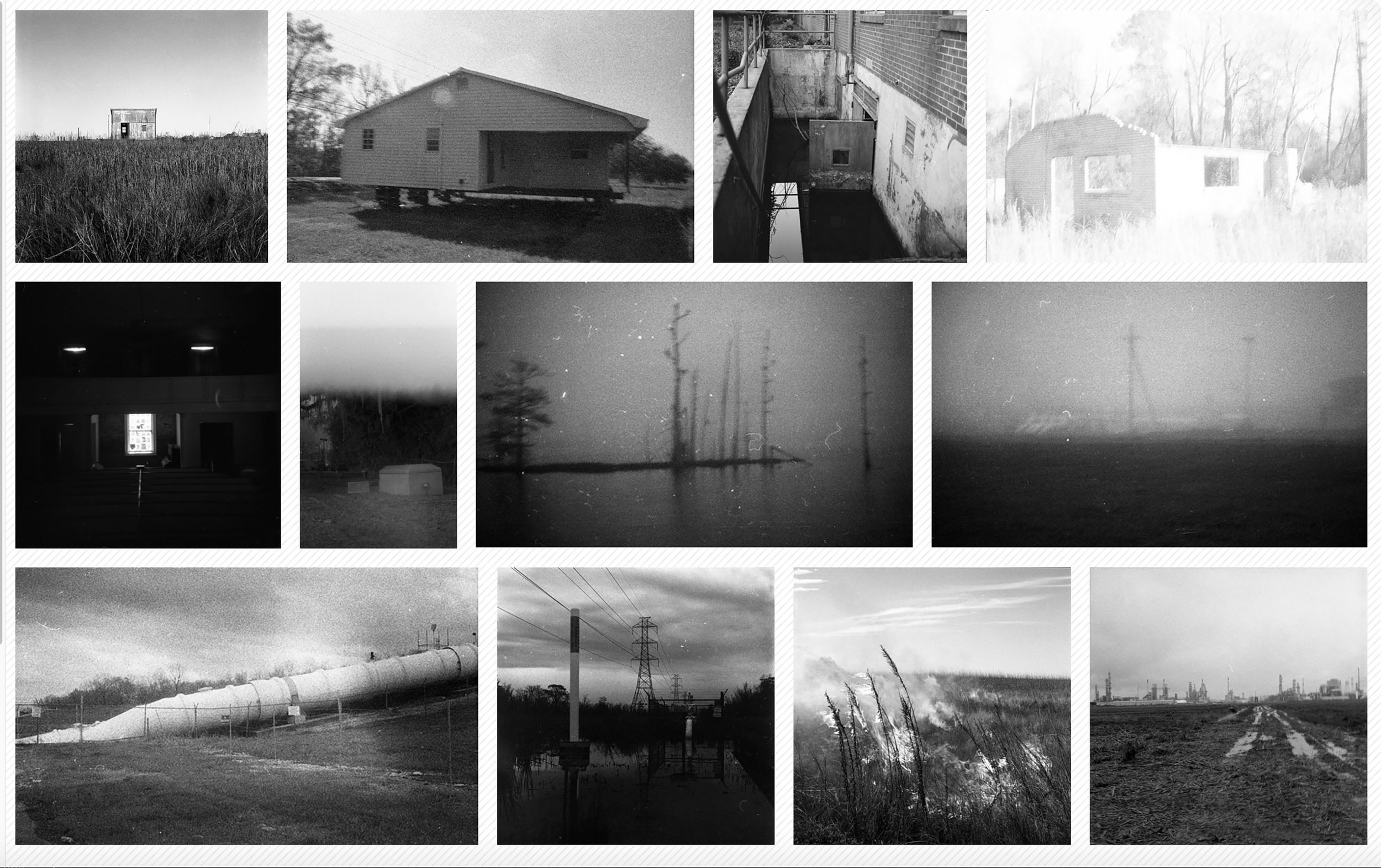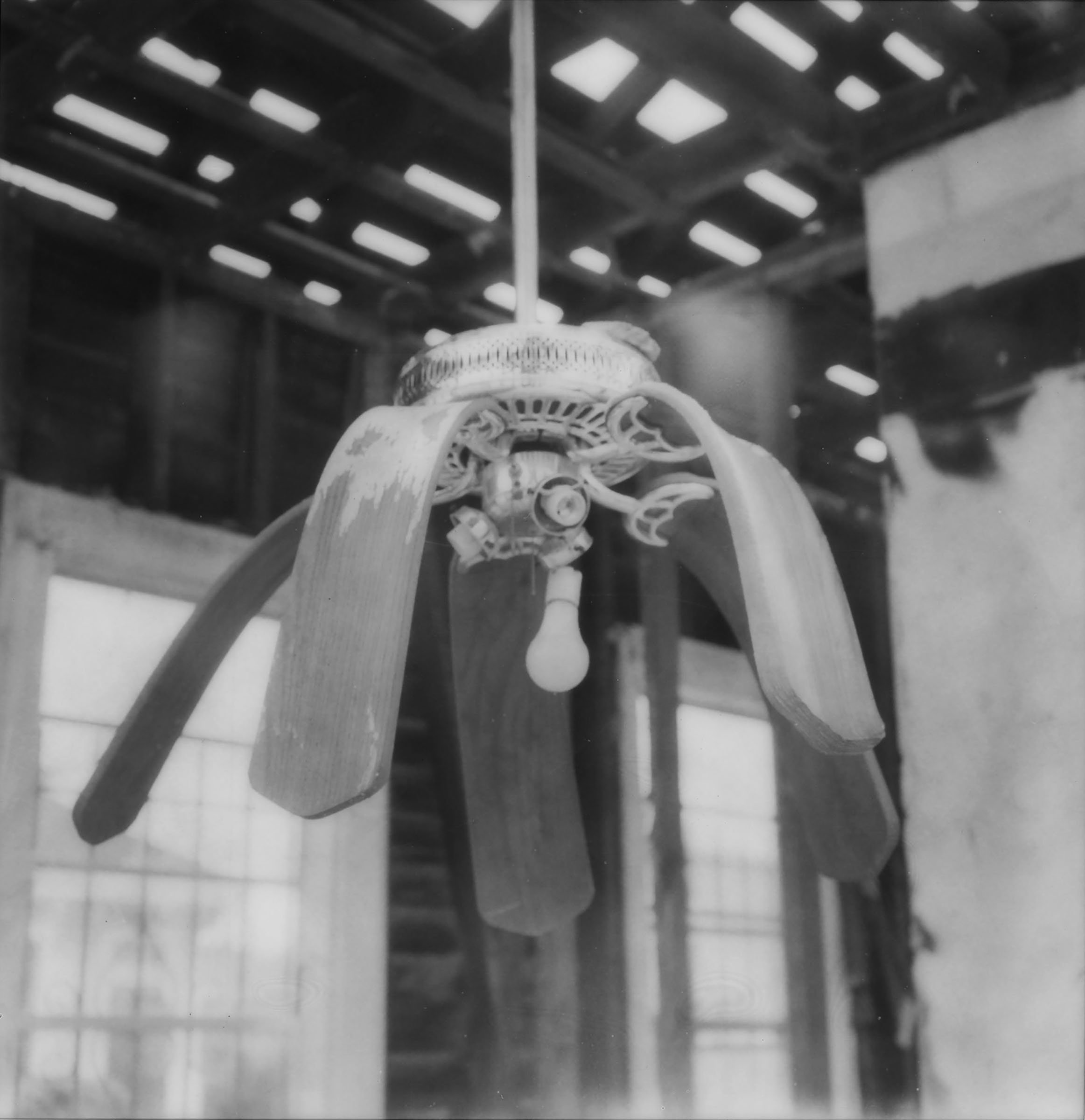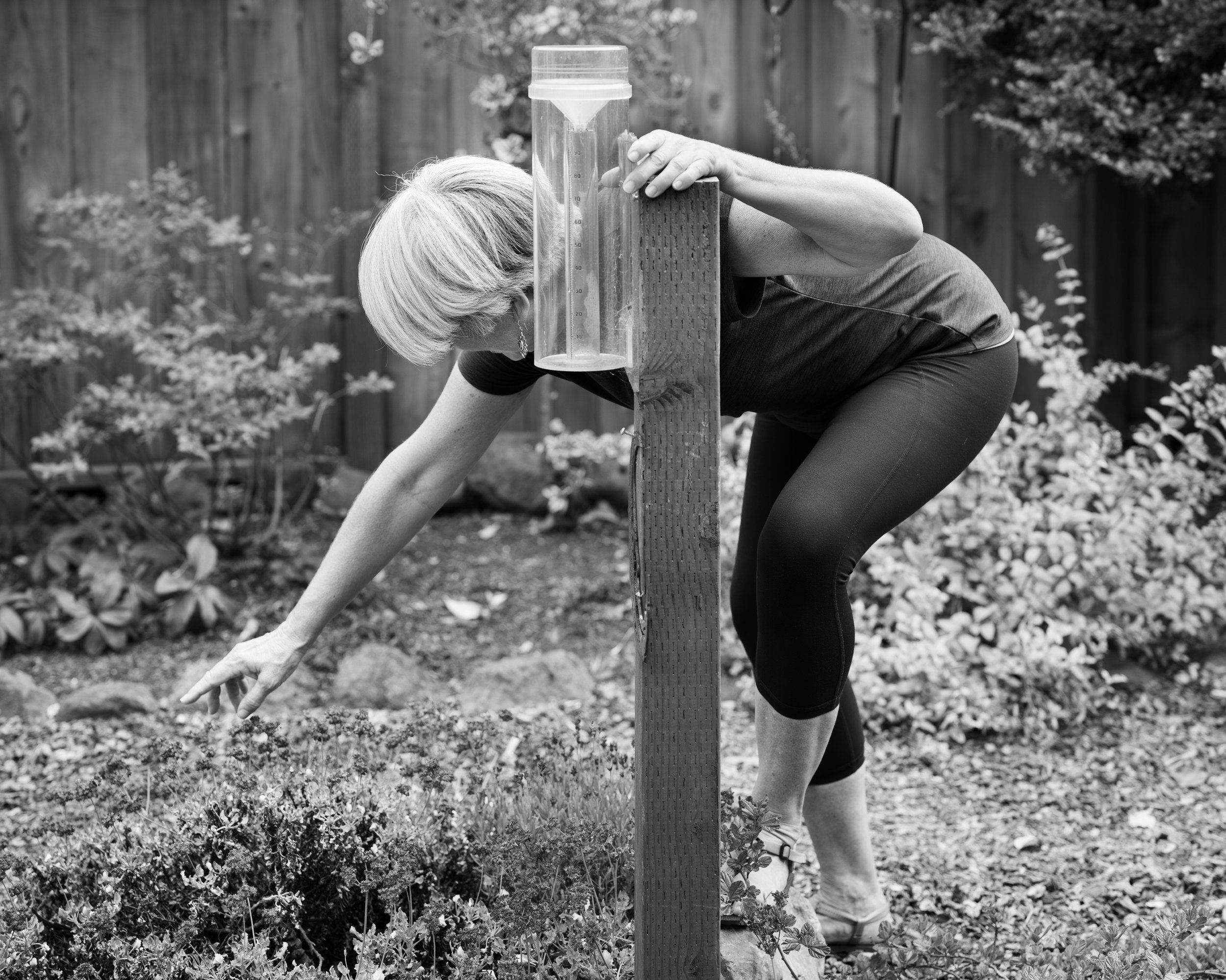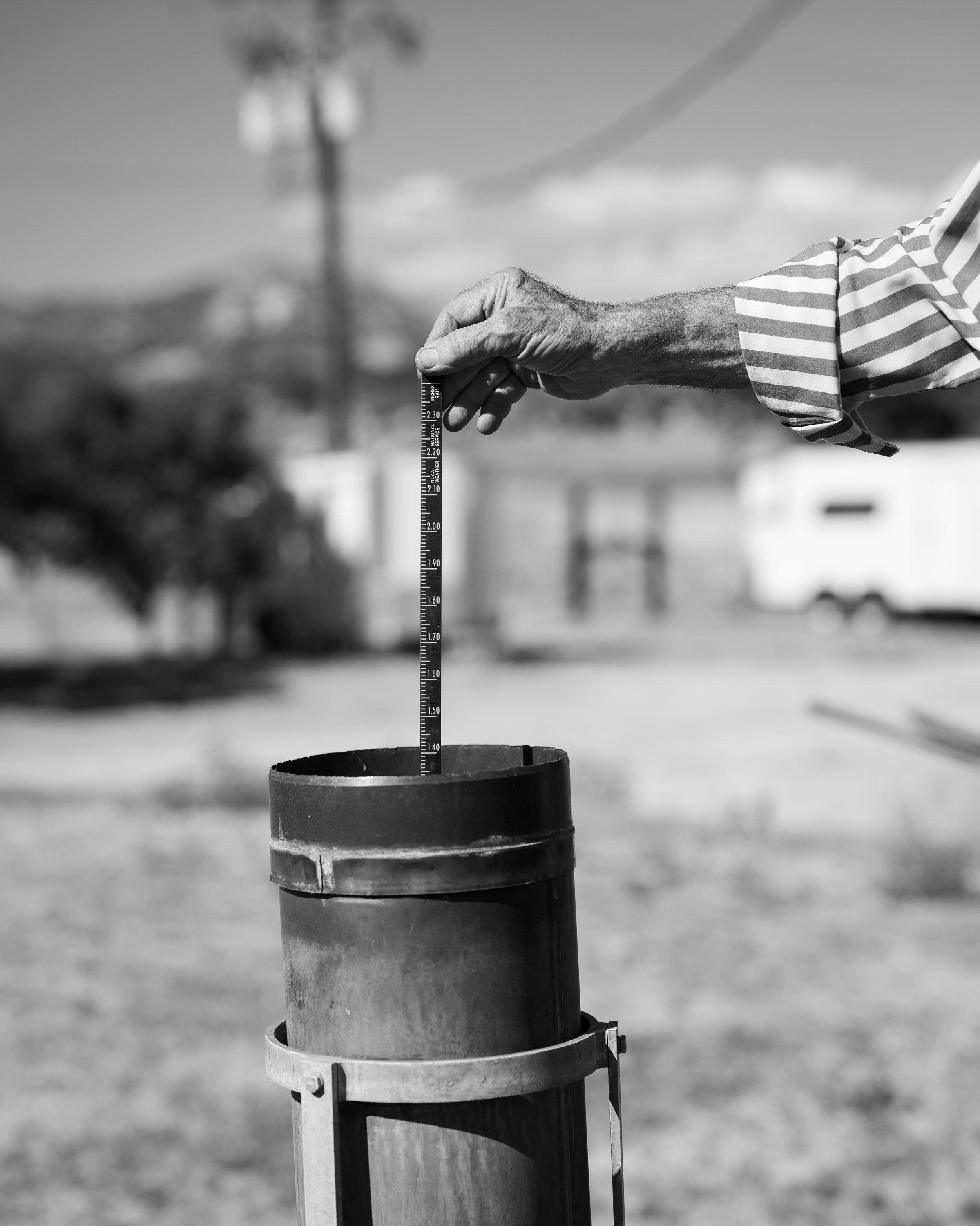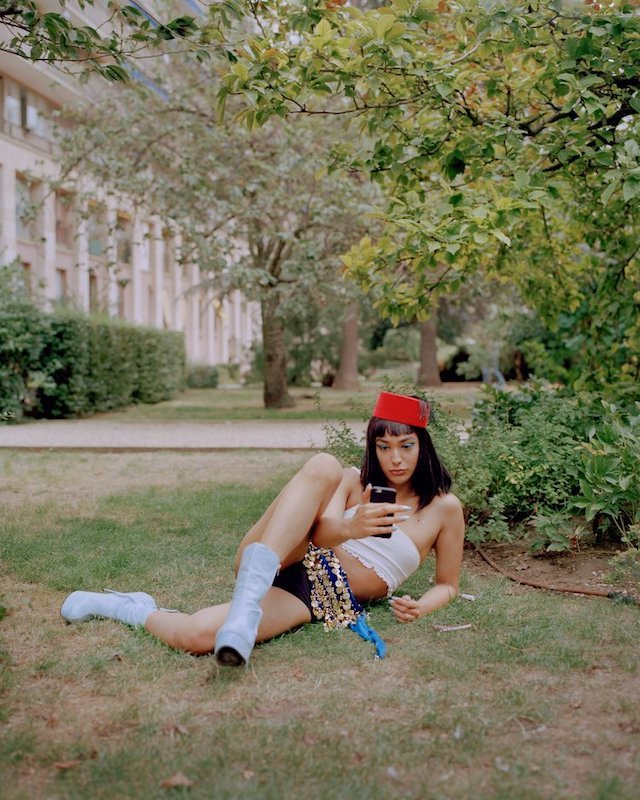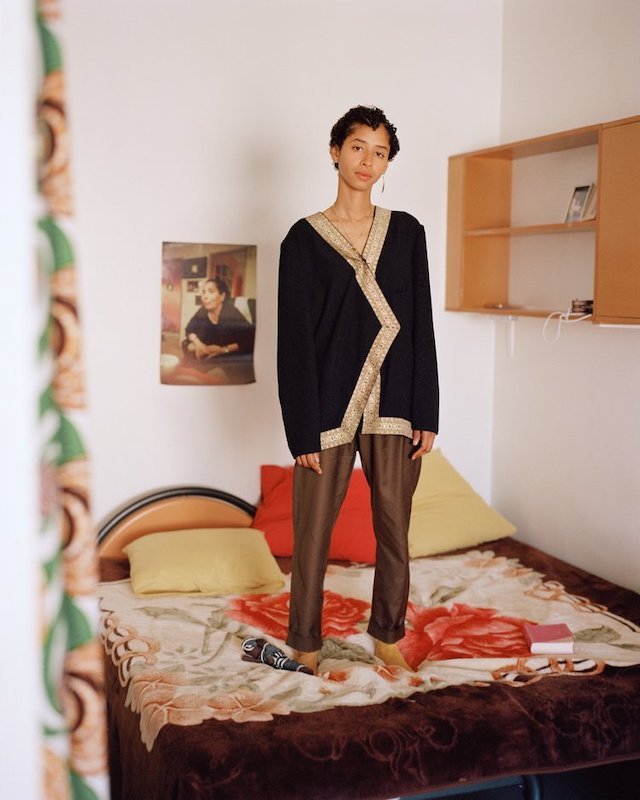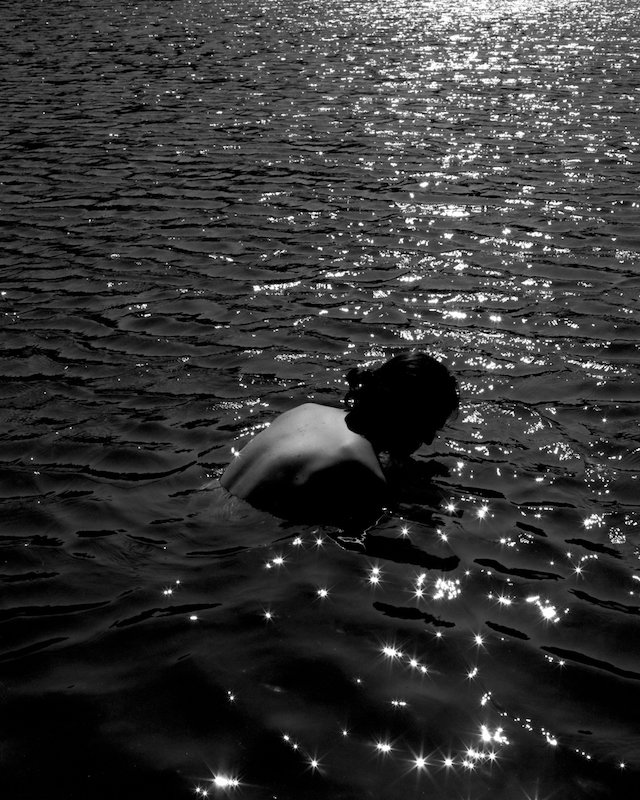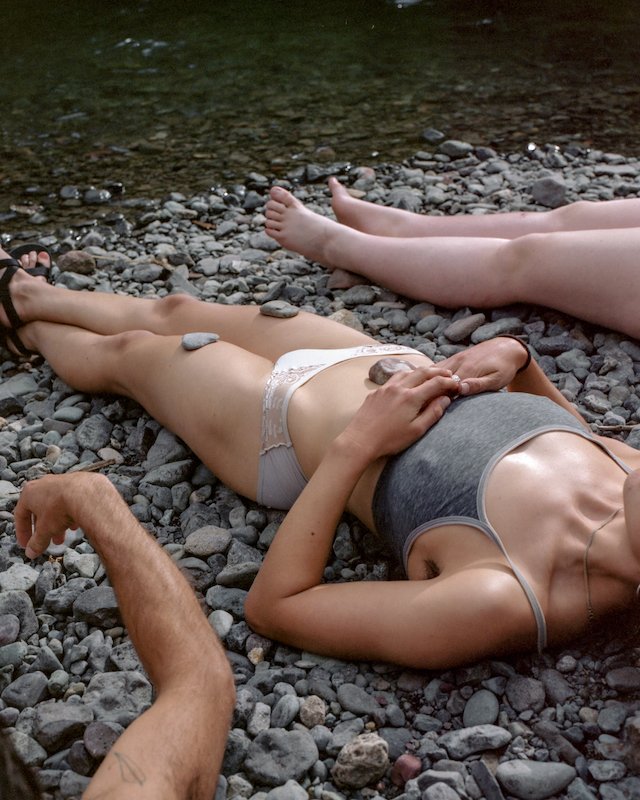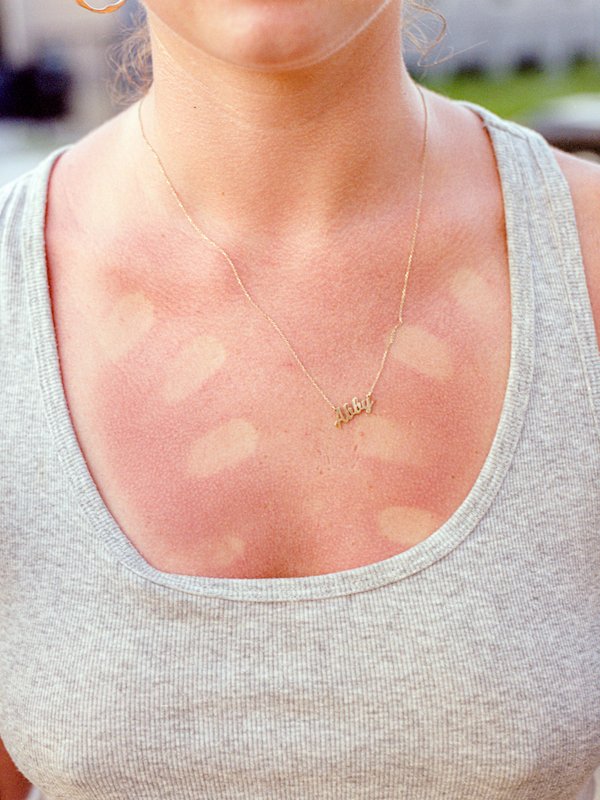December 10 - January 14
Opening reception Second Saturday, December 10, 6-10pm.
Gallery hours are Saturdays and Sundays, 12-5pm, see below for holiday schedule.
HOLIDAY HOURS:
Friday, 12/23/22, 12-5pm
Saturday, 12/24/22, 12-4pm
Sunday, 12/25/22, CLOSED
Saturday, 12/31/22, 12-5pm
Sunday, 1/1/23, CLOSED
Be sure to check out The St. Claude Art Rag for more info on the Second Saturday Art Openings on St. Claude!
programming this month:
December Artist Talks
Sunday, December 11, 2:00 pm
Elliot Stokes, A Salty Salute
Lily Brooks, Rain Gauge
Camille Farrah Lenain, Made of Smokeless Fire
Dani Leal, Can’t Stop Staring
room 1
Elliott Stokes, Ripple in the Water, Polypropylene image transfer (George W. Stokes Oil diesel fuel receipt), 4.25 x 7 inches, 2022.
Elliott Stokes, Bleeding Pleading Cursing (selection), Photo installation consisting of 8 framed gelatin silver prints (from Bleeding Pleading Cursing - a photo essay exploring the historical intersection of labor and landscape within Southeast Louisiana), 9.5 x 12 inches (each), 2022.
Elliott Stokes, B&W1_006 (Jackson Ave), Polaroid SX-70 print, 3.108 × 3.024 inches, 2021.
A Salty Salute
Elliot Stokes
“A Salty Salute is a mixed-media installation using various photographic processes which document the aftermath of past industrial and extraction actions. The effects of these actions are captured in states of patinas, residues, and grainy film, where time is still in flux. Images shift beyond recognition, illuminating the distance between actions and consequence. As images lose their coherence, we can’t but feel how we are also lost under a system of our own making.”
“Photography has always been a sketching device I’ve used in my artwork, specifically when traveling and scouting for materials, but I’ve never heavily featured photographs or allowed my photographs to stand alone. As I began working through this installation, I wanted to share my personal narrative of how labor and landscape came to manifest in my art practice. I grew up in proximity to the oil industry of southeast Louisiana and saw firsthand the effects of natural disasters and the resulting economic ruin. I kept returning to images of the location. The more I examined my photographs of these landscapes, the more I found a narrative already present. Photography is effective because it allows the images to exist within a state of timelessness: I want the viewer to not know exactly when these images take place. This speaks to the larger themes of hauntology, as reflected in the history of southern gothic literature, how the inescapable past remains present in the landscape of the current southern landscape. The future landscape can be implied through the use and role of petrochemical facilities and its continued societal and ecological impact.“ (Excerpt from Bleeding Pleading Cursing)
Elliott Stokes (B. 1990, New Orleans, LA.) Stokes received his Studio MFA from the University of Illinois in Urbana-Champaign with a concentration in painting, sculpture and new media. His artwork exists within the gray area of necessity and critique of industrial and agricultural processes and how they reflect past histories and infer future trajectories. Positioning his artwork between reverence and contempt of industry, specifically petrochemicals, Stokes uses this tension as a launching point for cultural examination and introspection. He has exhibited nationally across the Midwest and Southeast, including Zhou B. Arts Center in Chicago, Ogden Museum of Southern Art and Contemporary Arts Center in New Orleans. He is currently a member of The Front gallery and collective in New Orleans.
room 2
Lily Brooks, Julie, San Francisco, California, Archival Pigment Print, 32x40 inches, 2022.
Lily Brooks, Larry, Campo, California, Archival Pigment Print, 40 x 32 inches, 2022.
Rain Gauge
Lily Brooks
Rain Gauge includes recent photographs from Brooks’ series We Have to Count the Clouds (2011-present). This ongoing work examines our relationship to both daily weather and climate change, seeking visible traces of proof in seemingly-distant spaces: in the rituals of scientific observation, in the surfaces of an altered landscape, on the human body itself. Through gesture and mark-making, these photographs consider the ways we both intimately know and willfully abstract our delicate relationship to the natural world.
Lily Brooks holds an MFA from the University of Texas at Austin and a BFA from the Massachusetts College of Art + Design. Her work has been featured in publications such as Oxford American and the Los Angeles Times. She is the 2019 recipient of an Archive Documentation and Preservation Grant from the New Orleans Jazz and Heritage Foundation for her ongoing project, The Spillway. Brooks is an Assistant Professor of Photography and the Edward G. Schlieder Foundation Professor of Environmental Studies and Sustainability at Southeastern Louisiana University. She lives in Baton Rouge.
room 3
Camille Farrah Lenain, Lalla Rami, Boulogne, 2022
Camille Farrah Lenain, Rizlaine, Paris, 2022
Made of Smokeless Fire
Camille Farrah Lenain
“Made Of Smokeless Fire” is an exploration of LGBTQIA+ identities within Muslim culture in France. Camille Farrah Lenain started this project as an homage to her uncle Farid who passed away in 2013. Without having the ability to speak with him, the French-Algerian photographer turned towards other people carrying these plural identities, often underrepresented and misunderstood. With a soft and empathetic approach, Camille Farrah Lenain aims to deconstruct these stereotypes through a series of portraits and personal testimonies.
Camille Farrah Lenain is a French-Algerian documentary and portrait photographer who grew up in Paris, studied Photography at l’ESA in Brussels and at ICP in New York City (virtual). She relocated to New Orleans in 2013, where she works on long-term projects with a focus on empathetic portraiture, exploring the notions of representation, collective memory and plural identities.
Her clients include : The New York Times, Rolling Stone, The Washington Post Magazine, T Magazine, Sierra Magazine, The Bitter Southerner and Libération. Her photographs have been exhibited internationally, including at the Ogden Museum of Southern Art, Festival Incadaques, Les Boutographies, PhotoVogue Festival. She was previously an Artist in Residence at the Joan Mitchell Center and Nunu’s Arts Collective.
Camille is a member of Women Photograph, Diversify Photo and Authority Collective, and works between France and Louisiana.
room 4
Dani Leal, Donner Pond, 2021, Archival Pigment Print, 24x30in.
Dani Leal, Telluride, 2021, Archival Pigment Print, 24x30in.
Dani Leal, Abby, 2022, Archival Pigment Print, 24x30in.
Can’t Stop Staring
Dani Leal
Can’t Stop Staring is a collection of bridges. It’s a chronicle of proximity and closeness, two things I think about often and how they are at odds with each other. I photograph as a way to be nearer to something, despite often being able to simply reach out and touch. I stare at people, places, and things, as I would a to-do list, hoping that in doing so, there will be a magical shift in time. When I cannot envision myself somewhere, I photograph where I would like to be. And then I stare at them some more, to understand how I got here, or there.
Dani Leal is a Latinx photographer based in New Orleans, Louisiana and Miami, Florida, where she was born and raised. She has exhibited work at the Contemporary Art Center of New Orleans, the Ogden Museum of Southern Art, and Southeastern Louisiana University. Her work explores intergenerational narratives, and love as a notion and an act. It is a survey of our love languages and how they are connected to place and identity.
Leal was the Artist-in-Residence at Mentoring Artists for Women's Art (MAWA) in Winnipeg, Manitoba, Canada and a Fall 2020-2021 Artist in Residence at the Joan Mitchell Center in New Orleans. She is currently a collective member of The Front, an artist-run space in Bywater, New Orleans. In 2022, she was invited to participate in the 2022 Chico Hot Springs Portfolio Review.
